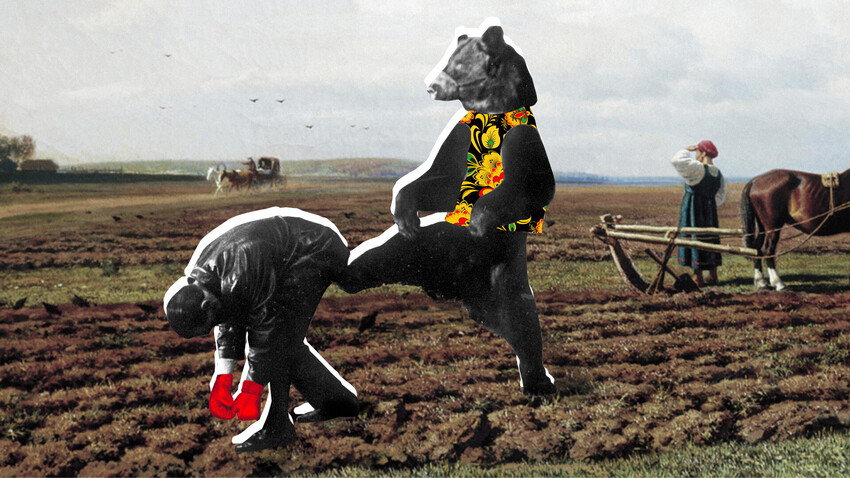
Bear entertainment was an ancient Russian pastime, once beloved by everyone from peasants to boyars. Performances could take place at any time, but there were a particularly large number of trained bears during festivals. Their trainers, called bear handlers or bear leaders, used to capture or buy bear cubs and then turn them into something akin to circus animals. This kind of occupation was a thriving business and a very cruel one.
Bears were abundant in the Russian forests and were easier to train than other wild animals. Little bear cubs were captured in the woods and sold to trainers for 1 to 4 rubles. A big trained bear could cost more than 100 rubles – such were the rates at the end of the 19th century. For comparison, in 1884, a university lecturer earned about 83 rubles a month.
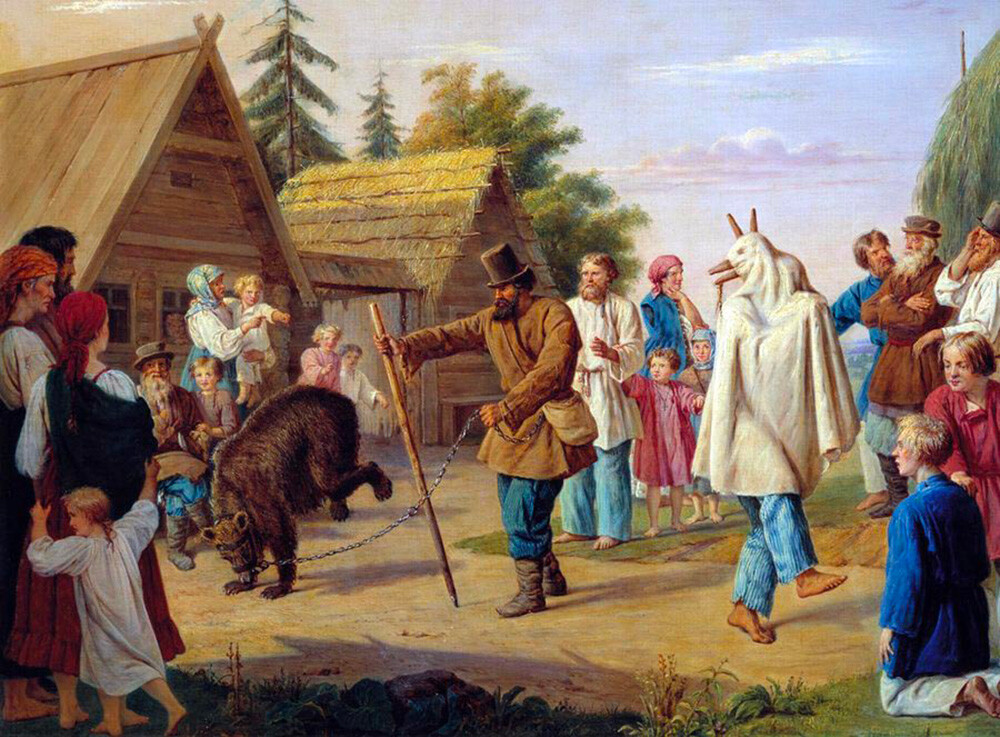
Skomorokhs in a village. Author: François Nicholas Riss.
The Tropinin Museum.The methods used to train little bear cubs were far from humane. To teach the young animals to stand up and walk on their hind legs, they had ‘lapti’ (bast shoes) put on their hind paws and were then locked in a copper cage, the bottom of which was heated up. When the bottom began to burn their unprotected front paws, the bear cubs would stand on their hind legs, which were protected in the ‘lapti’. The trainer would start to beat a tambourine or drum while this was happening. After the bear cubs had been let out of the cage, on hearing the sound of a tambourine or drum they would automatically start walking on their hind legs.
After this "schooling", the bears had their claws and teeth filed down and a ring inserted through their nose and lips. Tugging on the ring was very painful for the bear, compelling it to obey commands. The animals that couldn't ultimately be tamed had their eyes gouged out in order to protect the handler.
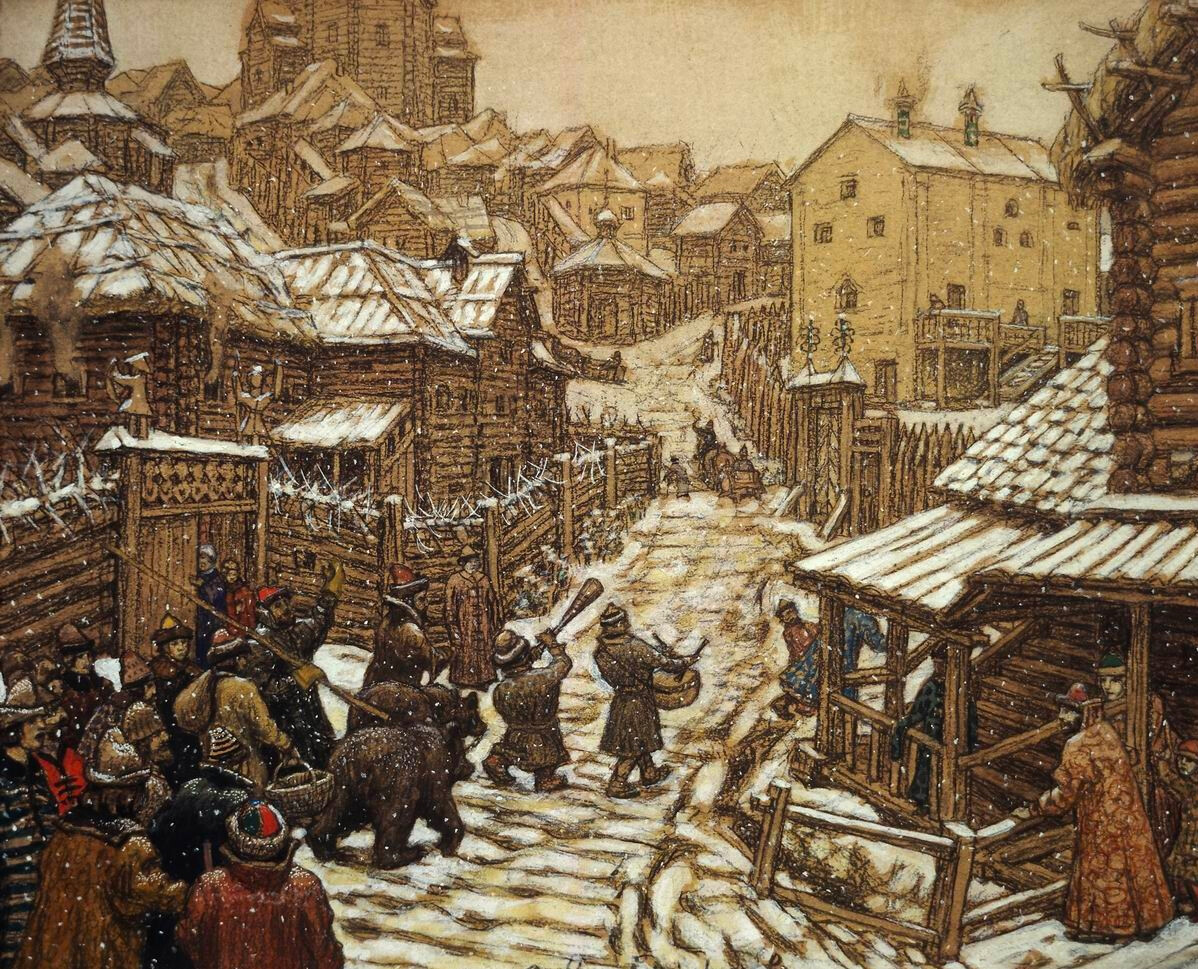
"Old Moscow. Bear handlers" by Apollinary Vasnetsov
Private collectionBear entertainment was made up of three parts: bear comedy, bear baiting and bear fighting. Bear comedy consisted of the enactment of scenes in which the bear imitated human behavior and its trainer accompanied the performance with a commentary. This is how historian Dmitry Rovinsky described a bear comedy in his story 'Arrival of the Bear Leader and His Bear': "'Come on, Mishenka,' the trainer begins, 'bow to these fine gentlemen and show them how clever you are and what the sexton taught you at school and what intellect he endowed you with. And how the fair maidens and the young married women whiten their faces and put on rouge and look at themselves in the mirror and smarten themselves up.' Misha the bear sits down on the ground and rubs his snout with one paw and, with the other, he gyrates a claw in front of his face – which represents a maiden looking at herself in the mirror."

Bear comedy.
Public domainThis was how the handlers created the impression that bears understood human speech.
Another traditional participant in bear comedy was a boy masquerading as a goat. The trainer's apprentice would cover himself with a sack through which poked a stick with a pretend goat's head and horns. Attached to the head was a tongue-like wooden clapper that produced a loud noise. The dressed-up boy would run around the bear baiting him, butting him with his horns and annoying him. The bear would then bellow and stretch to full height, but the handler would then tug at his ring – and the animal would begin to “dance”. At the end of the show, the bear would collect the spectators' donations in his master's hat.
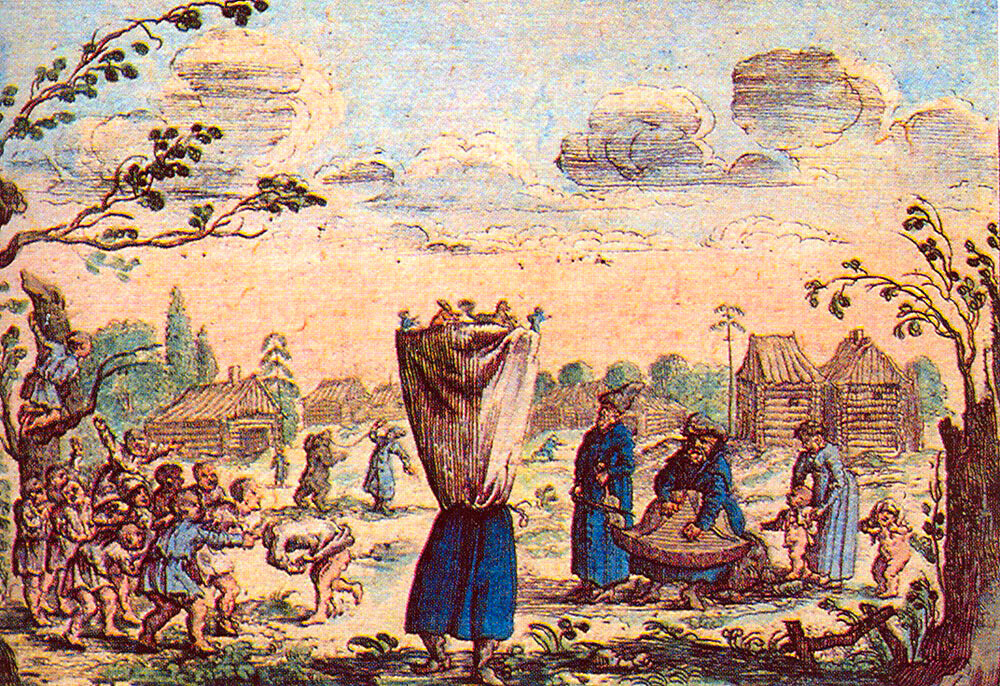
Not all bear performances had a happy ending. Sometimes, the handler would decide to tussle with the animal – and he would be very lucky if he ended the performance without any fractured bones. And there were also people who would take on untrained bears, i.e. wild ones!
A man with a pitchfork or spear would be placed inside a partitioned-off ring and a wild bear would be let loose on him. If the armed man killed the bear, he was awarded money from the sovereign's purse – sufficient to purchase fine fabric for a caftan – and he was allowed into the tsar's wine vaults. If the fighter was unlucky, he ended up being killed. This kind of performance was called ‘bear fighting’ and it was popular until the 18th century until it died out because of its cruelty. But, in its time, it was regarded as a perfectly normal form of entertainment. For a start, hunters would single-handedly go after bears in real hunts. And, secondly, those who took part in these performances did so voluntarily. They were usually held under the auspices of the court and so the people who volunteered for bear fights were usually from the Lovchy Put – the department responsible for hunting and maintaining the tsar's hunting grounds. In other words: they were professionals.

Watercolor by N.Samokish.
Public DomainBear entertainment was condemned in ‘Domostroi’, the set of rules for all spheres of life written in the 16th century. The author describes them as "offensive to God" and even compares bear handlers to sorcerers and fortune tellers, who, if caught, would be barred from church communion for six whole years.
In spite of this, the tradition proved very persistent and popular among ordinary people – whole villages would turn out for the performances of bear handlers.
Bear entertainment was officially banned in 1867, thanks to the work of animal welfare societies and a Senate decree prohibiting bear comedy performances. However, bear handlers only fully disappeared by the 1930s.
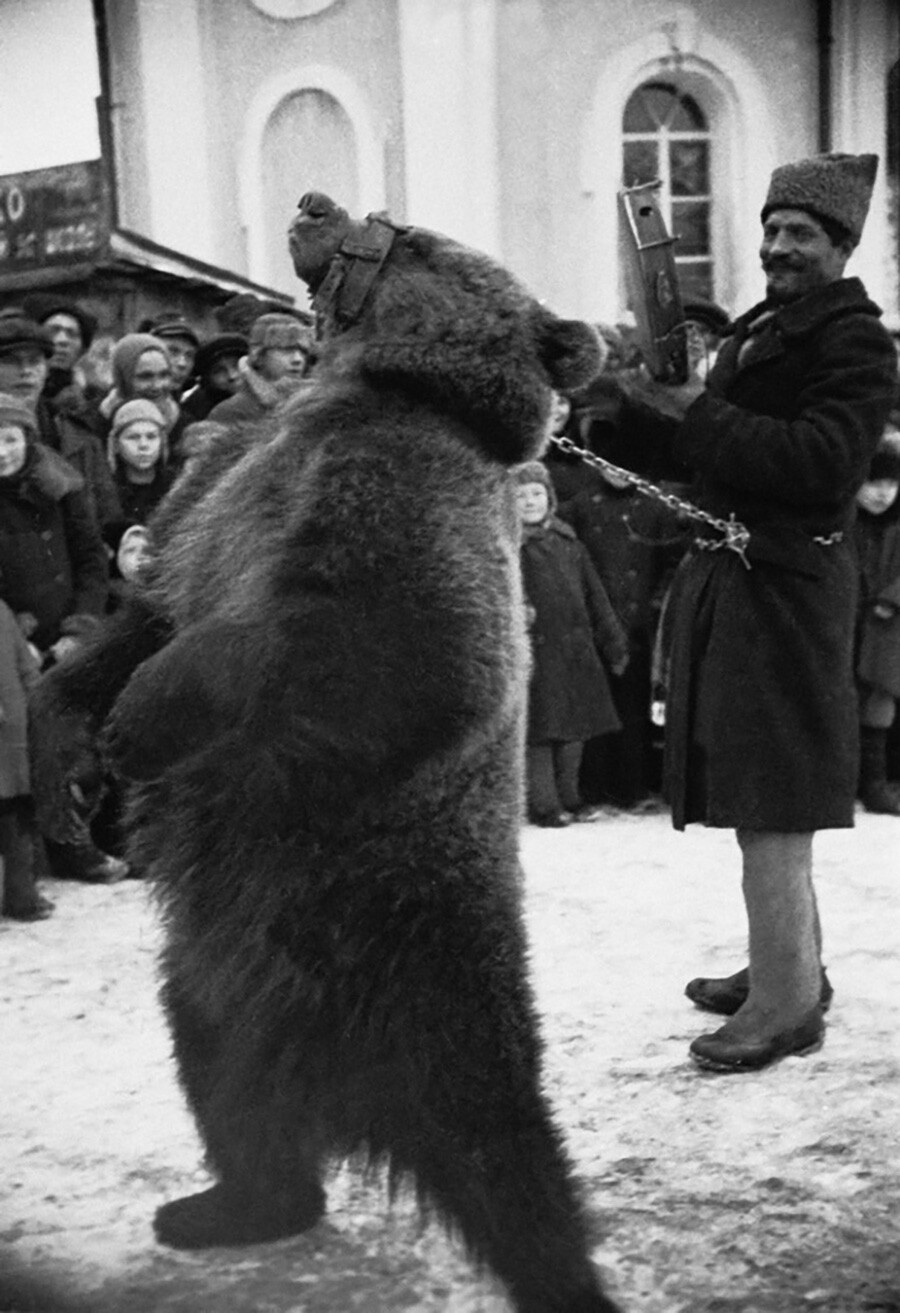
Dear readers,
Our website and social media accounts are under threat of being restricted or banned, due to the current circumstances. So, to keep up with our latest content, simply do the following:
If using any of Russia Beyond's content, partly or in full, always provide an active hyperlink to the original material.
Subscribe
to our newsletter!
Get the week's best stories straight to your inbox